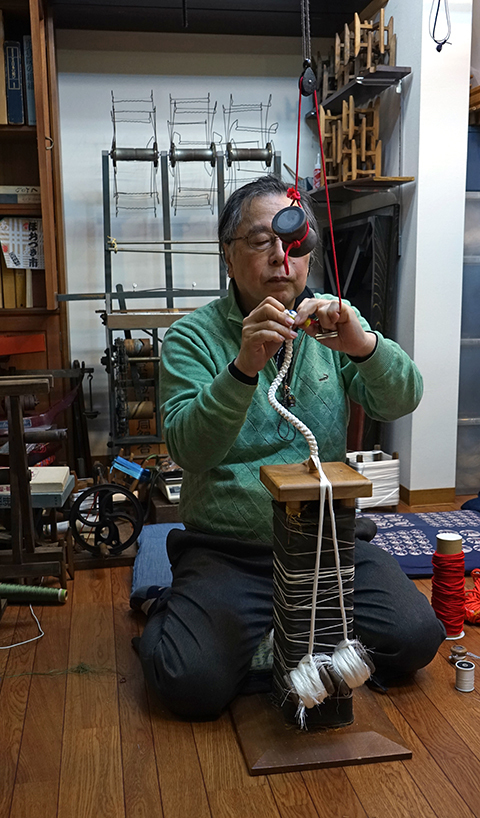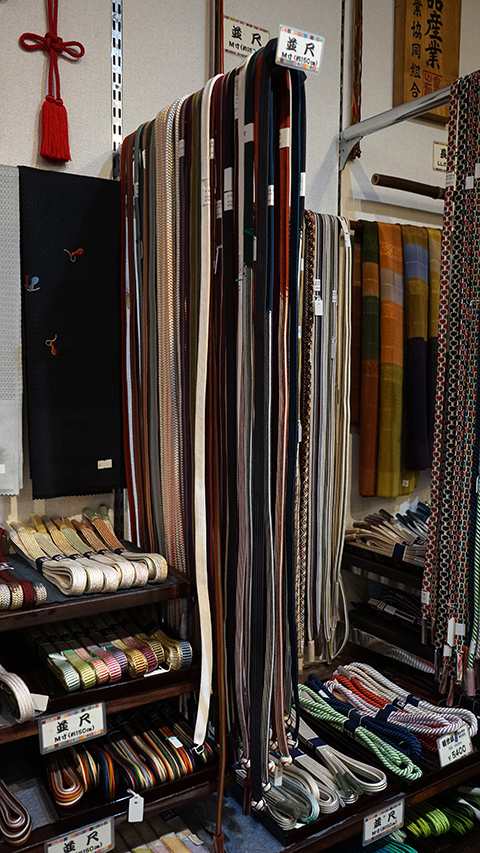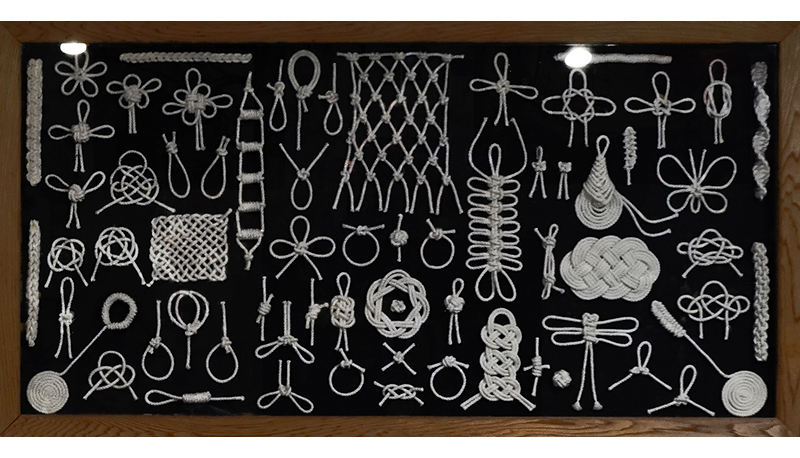In the past, Kumihimo was used for ceremonial dresses, crowns, swords, armors, and Japanese-style sash bands and Japanese half-coat cords. Its techniques have been applied to ropes and strings for packing, and major work ropes for forestry, construction, maritime and land transportation. Techniques of Japanese Kumihimo have been developed through those applications in a wide range of fields. In addition to silk, wool, cotton and synthetic fibers have been used as materials for Kumihimo, leading to its uses in home electric appliances and furniture. Along with changes of industrial structures, people are seeking ways to hand down its techniques and its new uses and applications. (continued in the lower column)
Although times have changed from the Meiji to Taisho, Showa and Heisei Periods, Japanese half-coat cords, kimono belts, pouches, Japanese sword guards and accessories are continuously ordered in the same way as traditions of Japanese clothes for sumo wrestlers and others. Along with recent new Japonism movements abroad, skills and techniques unique to Japan have attracted attention again. Especially techniques and tools that take root in Japanese living have drawn attention.

Kumihimo products with a variety of patterns which are braided by various methods

Sash band products placed on the store that say "Obijime" and "It can be used to belt." Tourists from abroad may buy those products as belts or accessories.
Samples of various ornament cords that are hung in the store


Cellphone straps, bracelets and anklets, made of Kumihimo, which are popular among tourists from abroad and young people


Long pieces of Kumihimo are also in demand as materials for handmade goods. With its long history, the present-day Kumihimo gropes its way and opens up new fields.




















